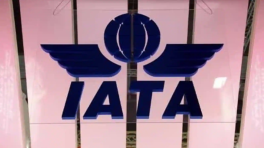The Covid tsunami and emerging markets
No one is sure why poorer countries have suffered proportionally fewer infections and deaths during the pandemic: weaker health systems, worse nutrition, and larger numbers of people with pre-existing medical conditions suggested the opposite outcome. But the economic implications have been clear

A tsunami-watcher's job is thankless. If an earthquake hits Australia, or an underwater volcano erupts near Java, naval stations in Japan, Vietnam, the Philippines, New Zealand, and even far-away Peru and Chile go on alert. Residents of coastal areas are warned that a big wave may be coming. Get it right, and tsunami-watchers save millions of lives; get it wrong, and they try to ignore the scorn, knowing that next time may be the big one.
In 2020, the COVID-19 tsunami was expected to devastate poor and middle-income countries everywhere. The wave did come, and its consequences were painful, but less so than anticipated.
Contrary to most forecasts, rich Western Europe and North America have suffered much worse loss of life and economic damage. Former World Bank Chief Economist Pinelopi Koujianou Goldberg and Tristan Reed report a strong positive correlation between income per capita and deaths per million inhabitants. As of late January, deaths per million in the United Kingdom were twice as high as in South Africa, 13 times higher than in India, and approximately 30 times higher than in Bangladesh, Pakistan, Syria and The Gambia. The United States is little different.
Countries with more deaths have suffered larger declines in income. The much-feared trade-off between lives and incomes has failed to materialize; on the contrary, fewer deaths have meant greater economic activity, so per capita incomes dropped by more in richer countries.
As a result, the expected tsunami of increased global inequality did not arrive. Within countries, income distribution in all likelihood became more skewed (restaurant workers and taxi drivers lost their jobs, while lawyers and bankers worked from the safety of their homes) but, as the Nobel laureate economist Angus Deaton has shown, the gap between rich and poor countries actually narrowed.
No one is sure why poorer countries have suffered proportionally fewer infections and deaths: weaker health systems, worse nutrition, and larger numbers of people with pre-existing medical conditions suggested the opposite outcome. Some early assessments point to the alleged advantage of warmer weather, but there is little evidence of that. Having younger populations is thought to help, yet that explanation does not explain why health outcomes diverged in countries with similar age distributions (India and Bangladesh, for example, or Nigeria and Zimbabwe).
Aging populations may help explain Latin America's dismal performance. Peru, Mexico, Brazil, Argentina, Panama, and Colombia all have death rates above 1,000 per million inhabitants – among the highest in the world. Snobby Latin Americans who long thought of themselves as misplaced Europeans had their wish fulfilled: the region now resembles Europe not just demographically (particularly in South America), but also in its appalling inability to control the pandemic.
So, who are the heroes of this tale? Not the International Monetary Fund and the other multilateral lenders, which once again offered too little, too late. The $250 billion lent by the IMF represents just a quarter of its lending capacity and a pittance compared to what countries needed and to what rich countries spent on pandemic relief for themselves. And former US President Donald Trump's administration vetoed an expansion of the IMF's reserve asset, special drawing rights, which would have allowed poorer countries to borrow more.
China, the only major economy to record positive growth last year, has propped up demand (and prices) for developing countries' commodity exports, bolstering these countries' finances. But China's role is secondary compared to what the world's major central banks accomplished.
We knew from the 2007-09 global financial crisis that keeping interest rates low for long is a powerful tool for recovery. Plus, this time around, investors' search for yield has caused the newly printed money to percolate to remote corners of the world. Markets did experience a tantrum in March and April 2020, withdrawing unprecedented quantities of funds from emerging and frontier economies. But the outflows soon ceased (and sometimes were reversed). Investors had nowhere else to go.
This set the stage for the real paladins of this tale: the macroeconomic authorities in many emerging and developing countries. A dozen years ago, few had the monetary and fiscal space to mount a robust response to the crisis. During the COVID-19 episode, by contrast, central banks and finance ministries took advantage of ultra-low world interest rates and created policy space where none was thought to exist.
Central bankers in countries like Chile, Colombia, Hungary, India, the Philippines, Poland, and Thailand engaged not just in interest-rate cutting but also in quantitative easing and local-currency asset purchases – not as large as those carried out by their rich-country counterparts, but large enough to make a difference, reducing funding costs and easing market strains. The prevalence of flexible exchange rates also helped, allowing the local currency to depreciate when adjustment to external shocks required it.
The fiscal response has been much more robust as well. The October 2020 IMF Fiscal Monitor reports that in Brazil, Chile, Peru, Poland, South Africa, and Thailand, measures involving additional spending and forgone revenue reached more than 5% of GDP. Other countries mounting a sizeable fiscal effort include Argentina, Bulgaria, Colombia, China, Indonesia, and Romania.
The 2020 economic contraction in the non-rich world will end up being much smaller than was once feared. In the January 2021 update to its World Economic Outlook, the IMF estimates that the GDP drop was nearly 5% in advanced economies, and only half of that in emerging and developing economies, where the 2021 recovery will be faster as well. Even in Latin America, where public-health conditions and lockdowns help explain a whopping 7.4% contraction in output, the number is less dismal than the 10% drop expected just a few months ago.
How long can this last, and how fragile will the underlying macroeconomic situation turn out to be? Consider Brazil. The good news is that a vigorous fiscal and monetary response has contained the recession and job destruction. The bad news is that public debt will soon reach 100% of GDP.
Debt has already hit that level in the US and UK, but the yield curve in those countries is flat, allowing governments to borrow at record-low rates for long maturities. In Brazil, by contrast, the yield curve is one of the world's steepest, pushing the government into borrowing at ever-shorter maturities. Granted, Brazil's debt is mostly in domestic currency. Still, conditions are building toward a run on Brazilian debt.
No one can be sure whether such a panic will occur. But more than a few tsunami watchers are again sounding the alarm – and not just in Brazil.
Andrés Velasco, a former presidential candidate and finance minister of Chile, is Dean of the School of Public Policy at the London School of Economics and Political Science. He is the author of numerous books and papers on international economics and development, and has served on the faculty at Harvard, Columbia, and New York Universities.
Disclaimer: This opinion first appeared on project-syndicate.ogr, and is published by special syndication arrangement.


 Keep updated, follow The Business Standard's Google news channel
Keep updated, follow The Business Standard's Google news channel














